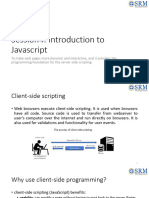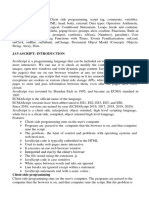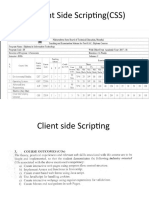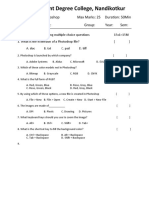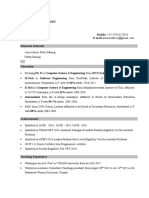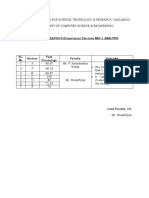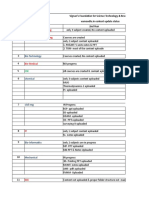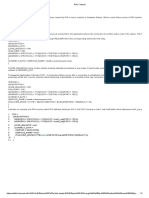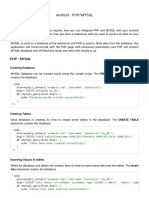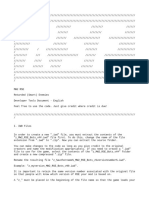0% found this document useful (0 votes)
64 views53 pagesJavascript: Language Fundamentals I
This document provides an overview of client-side and server-side programming with JavaScript. It discusses that client-side programs run in the web browser and do not require traveling through the network, which reduces burden on the network and increases performance. Server-side programs run on the web server and require a connection to the server. It also summarizes the differences between static and dynamic web pages and provides examples of JavaScript functions like alert(), confirm(), and prompt().
Uploaded by
Amaranatha Reddy PCopyright
© © All Rights Reserved
We take content rights seriously. If you suspect this is your content, claim it here.
Available Formats
Download as PPT, PDF, TXT or read online on Scribd
0% found this document useful (0 votes)
64 views53 pagesJavascript: Language Fundamentals I
This document provides an overview of client-side and server-side programming with JavaScript. It discusses that client-side programs run in the web browser and do not require traveling through the network, which reduces burden on the network and increases performance. Server-side programs run on the web server and require a connection to the server. It also summarizes the differences between static and dynamic web pages and provides examples of JavaScript functions like alert(), confirm(), and prompt().
Uploaded by
Amaranatha Reddy PCopyright
© © All Rights Reserved
We take content rights seriously. If you suspect this is your content, claim it here.
Available Formats
Download as PPT, PDF, TXT or read online on Scribd
/ 53


